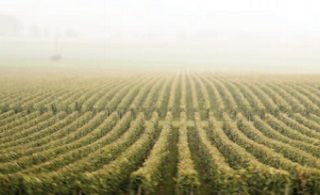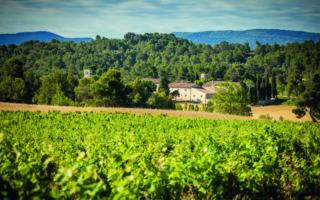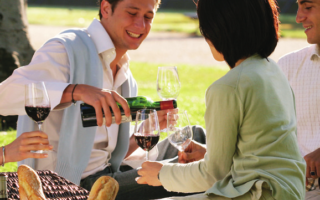What is a Bordeaux Chateau’s Second Wine?

Deuxieme Vin” in French
With the great Bordeaux becoming more and more pricy every year, it is only natural to look occasionally for bargains, and there may be no better wine bargains available today than the “second wines” of the great Chateaux of Bordeaux. There are certain rules that govern the making of such wines. In addition to being made from grapes that grow in the same vineyard, second wines must be made by the same winemakers and in the same cellars and barrels in which the great wine of the Chateau is made.
There are, of course, differences between the great wine of a chateau and its second wine. Because vines younger than ten or twelve years yield grapes that do not have the concentration and aging ability required by the great wine, the grapes from the younger vines are often set aside to go into the second wines. More than this, at times, perhaps due to the vagaries of the weather, some of the mature vines do not produce just the right style or quality required by the great wine, and these too can be set aside for second wines. Finally, because some of the more mature vines in a given year produced wine that just doesn’t fit into the pattern of this particular vintage, those grapes will also make their way into the second wine.
There are advantages to buying seconds, not the least of which is that second wines always cost less than half of what one would have to pay for the great wine from the same chateau. Another advantage is that because they rely heavily on grapes from young vines, second wines mature more rapidly and are ready to drink more quickly, giving you a hint within four or five years of the greatness that the glorious great wines may take twenty years to attain. Another advantage is that in great vintage years the gap in quality between the great wine and the second can be very narrow, the differences being in aging potential, complexity and elegance.
The idea of second wines is not a new one. Château Leoville- Les-Cases produced its first Clos du Marquis in 1904, and Château Margaux made its first Pavillon Rouge de Château Margaux in 1908. The present importance of such wines is a recent development however, only about twenty years old. More and more grapes are being harvested; higher and higher prices are being asked so winemakers have a duty to ensure the highest possible standard for their great wines. This in turn means that more and better second wines are now being offered, frequently at very reasonable prices, and are definitely worth considering.
The 2000 Vintage in Bordeaux
Here is an opportunity to acquire wines of high pedigrees from great producers without having to take out a second mortgage. Here are some good examples of some Second Wines:
From Château Haut Bages Liberal
La Chapelle de Bages, Pauillac
From Château Ducru Beaucaillou
Lacoste-Borie, Pauillac
From Château Leoville Poyfferé
Pavillon des Connétables, St Julien
From Château Chasse-Spleen
L’Ermitage de Chasse Spleen, Moulis
From Château Ducru Beaucaillou
La Croix de Beaucaillou St. Julien
From Château Monbousquet
Angelique de Monbousquet, Grand Cru St. Émilion
From Château Ducru Beaucaillou
*Chateau Lalande Borie, St Julien
From Château Nenin
*Fugue de Nenin, Pomerol
From Château Montrose
*La Dame de Montrose, St Estephe
From Château Angelus
*Le Carillon de l’Angélus St. Émilion
From Château Grand Puy Lacoste
*Lacoste Borie, Pauillac
From Château Lafite Rothschild
Carruades de Lafite, Pauillac
From Château Ausone
Chapelle d’Ausone, St Emilion Grand Cru
From Château Haut Brion
Bahans Haut Brion, Pessac Leognan
Share to: Facebook Twitter LinkedIn Email
More in chateau, courses, mortgage, vineyards, wine
By FrenchEntrée
Leave a reply
Your email address will not be published. Required fields are marked *



